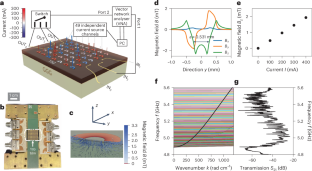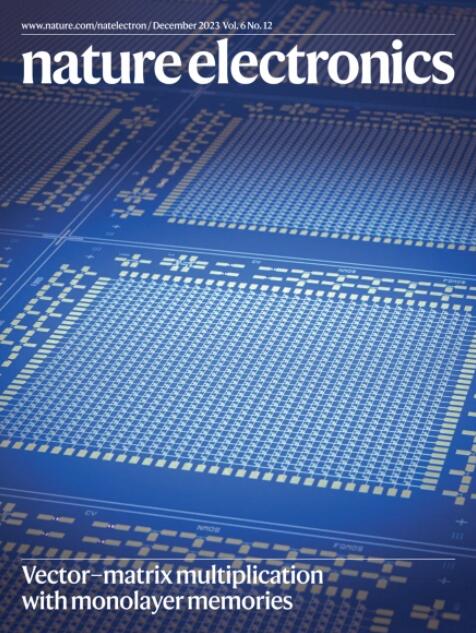A universal inverse-design magnonic device
IF 40.9
1区 工程技术
Q1 ENGINEERING, ELECTRICAL & ELECTRONIC
引用次数: 0
Abstract
Magnons, the quanta of spin waves, can potentially be used for energy-efficient data processing. The approach can, in particular, leverage the concept of inverse design, which involves defining a desired functionality and then using a feedback-loop algorithm to optimize device design. Here we report a simulation-free inverse-design device that can implement various radiofrequency components and can process data in the gigahertz range. The device consists of a square array of independent direct current loops on top of a yttrium iron garnet film that generate a complex reconfigurable magnetic medium. We use two feedback-loop algorithms—direct search optimization and a genetic algorithm—to configure the field patterns and create a linear radiofrequency notch filter and a demultiplexer. A device that consists of a square array of independent direct current loops on top of a film of yttrium iron garnet can generate a complex reconfigurable magnetic medium and be used to solve inverse-design problems experimentally without the use of numerical simulations.


一种通用反设计磁振器
磁振子,自旋波的量子,可以潜在地用于高能效的数据处理。该方法尤其可以利用逆设计的概念,即定义所需的功能,然后使用反馈回路算法来优化设备设计。在这里,我们报告了一种可以实现各种射频组件并可以处理千兆赫范围内数据的无仿真反设计装置。该装置由钇铁石榴石薄膜上的方形独立直流回路阵列组成,该薄膜可产生复杂的可重构磁介质。我们使用两种反馈回路算法-直接搜索优化和遗传算法-来配置场模式并创建线性射频陷波滤波器和解复用器。
本文章由计算机程序翻译,如有差异,请以英文原文为准。
求助全文
约1分钟内获得全文
求助全文
来源期刊

Nature Electronics
Engineering-Electrical and Electronic Engineering
CiteScore
47.50
自引率
2.30%
发文量
159
期刊介绍:
Nature Electronics is a comprehensive journal that publishes both fundamental and applied research in the field of electronics. It encompasses a wide range of topics, including the study of new phenomena and devices, the design and construction of electronic circuits, and the practical applications of electronics. In addition, the journal explores the commercial and industrial aspects of electronics research.
The primary focus of Nature Electronics is on the development of technology and its potential impact on society. The journal incorporates the contributions of scientists, engineers, and industry professionals, offering a platform for their research findings. Moreover, Nature Electronics provides insightful commentary, thorough reviews, and analysis of the key issues that shape the field, as well as the technologies that are reshaping society.
Like all journals within the prestigious Nature brand, Nature Electronics upholds the highest standards of quality. It maintains a dedicated team of professional editors and follows a fair and rigorous peer-review process. The journal also ensures impeccable copy-editing and production, enabling swift publication. Additionally, Nature Electronics prides itself on its editorial independence, ensuring unbiased and impartial reporting.
In summary, Nature Electronics is a leading journal that publishes cutting-edge research in electronics. With its multidisciplinary approach and commitment to excellence, the journal serves as a valuable resource for scientists, engineers, and industry professionals seeking to stay at the forefront of advancements in the field.
 求助内容:
求助内容: 应助结果提醒方式:
应助结果提醒方式:


